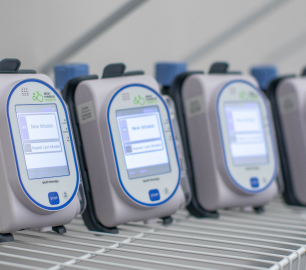Everyone knows how important data is to effective decision making, so why do many small to mid-sized companies still fail to use it? Commercial suites aren’t tailored to your industry? Lack the resources? Don’t know where to begin, or how to stay consistent? Aren’t sold on the value? While the list goes on, only one of these excuses has any legitimacy, and we’re going to help you with it right now.
Before we talk about where to begin and how to stay consistent, let’s look briefly at some long term care and specialty pharmacy industry specific reasons that you should be capturing and using data. We aren’t going to cover profitability directly, which can be driven by either increasing sales or reducing costs (and ideally both), because in the end all of these reasons drive profitability.
Efficiency
Organizational processes are often developed organically to meet a specific need at a specific time. While there is nothing wrong with that, these processes are rarely updated as time goes on and the business changes. Often they become less efficient over time if not outright obsolete. However, it can be difficult to identify inefficient or even obsolete processes from a ground-level view. It’s only with a macro lens that data provides that these processes can be identified, diagnosed and fixed or eliminated.
Utilization
Put simply, infusion pumps or other equipment that’s sitting on a shelf isn’t making your company money. However, it’s never as easy as opening up a supply room and seeing what’s on the shelf. Data not only allows you to track the location and disposition of your equipment, but also seasonal or other cyclical-based demand trends.
Compliance
This isn’t just about avoiding sanctions, making sure your equipment is in good working order can directly impact your patients. So the issue is not whether to be compliant or not, but how much effort it requires to do so. Data not only decreases the resources and time required to stay compliant, but the likelihood of compliance errors as well.
Patient Outcomes
We all know the importance of patient outcomes; it’s why we do what we do. But to put an exclamation mark on this is a recent article, Early-Stage Breast Condition May Not Require Cancer Treatment, published in the New York Times.
“As many as 60,000 American women each year are told they have a very early stage of breast cancer — Stage 0, as it is commonly known — a possible precursor to what could be a deadly tumor. And almost every one of the women has either a lumpectomy or a mastectomy, and often a double mastectomy, removing a healthy breast as well.
Yet it now appears that treatment may make no difference in their outcomes. Patients with this condition had close to the same likelihood of dying of breast cancer as women in the general population, and the few who died did so despite treatment, not for lack of it, researchers reported Thursday in JAMA Oncology.”
Without data, 60,000 women each year would continue to have invasive surgery that did absolutely nothing to improve their outcomes.
Where to begin and how to stay consistent
To begin, don’t think about data think about questions. What questions would you like to have the answers to? Make a list. It may include questions like:
- How much time per month do we spend on support services like device intake, evaluation, and assignment?
- What is our average device utilization percentage per unit per month?
- How many days past due have we been on device preventative maintenance in aggregate over the past year?
- How do patient outcomes differ using device A compared to device B?
Once you’ve made an exhaustive list of questions, you can go back and identify what data would be required to answer them and how the answers impact your business.
With questions and data sources identified, create a matrix to identify data that addresses multiple questions, and then group those questions together. Now you are in a position to assess the effort required to gather a particular data point compared to the value it provides (either in terms of importance of the question – business impact, or the number of questions addressed).
You’ll be tempted to answer many if not all of your questions, but don’t. Prioritize and start small. Look for the critical data, or data that can be easily collected as a group. This is your “alpha” phase and is much about creating process as it is collecting data.
Once you’ve narrowed your list down, create a paper-process. A paper-process mimics what you’d like an application to do but on paper (although excel spreadsheets can be substituted for the actual paper). It’s the best way to introduce a flexible process that you expect to change as you learn new things.
As you tighten down your paper-process and become comfortable and efficient with it, you can add data points to answer more questions. Once you’ve created processes for all the questions you want to answer, you can then decide if and how you want to automate or systematize the data acquisition and reporting. You may find that your excel-aided paper-process is all you need!
A final note about consistency; you will need to address two areas to ensure your data is consistently collected and acted upon. The first is buy-in and the second is accountability. You need buy-in from both the people collecting the data as well as those that will be using the data. Both groups need to understand the importance of what you are asking them to do. In the same vein, both groups need to know that their efforts are being observed and appreciated. Accountability doesn’t necessarily require repercussions, but make it a point to systematically review the data so that if it is incomplete or outdated, the people collecting it can expect to be asked why and when it will be addressed.



